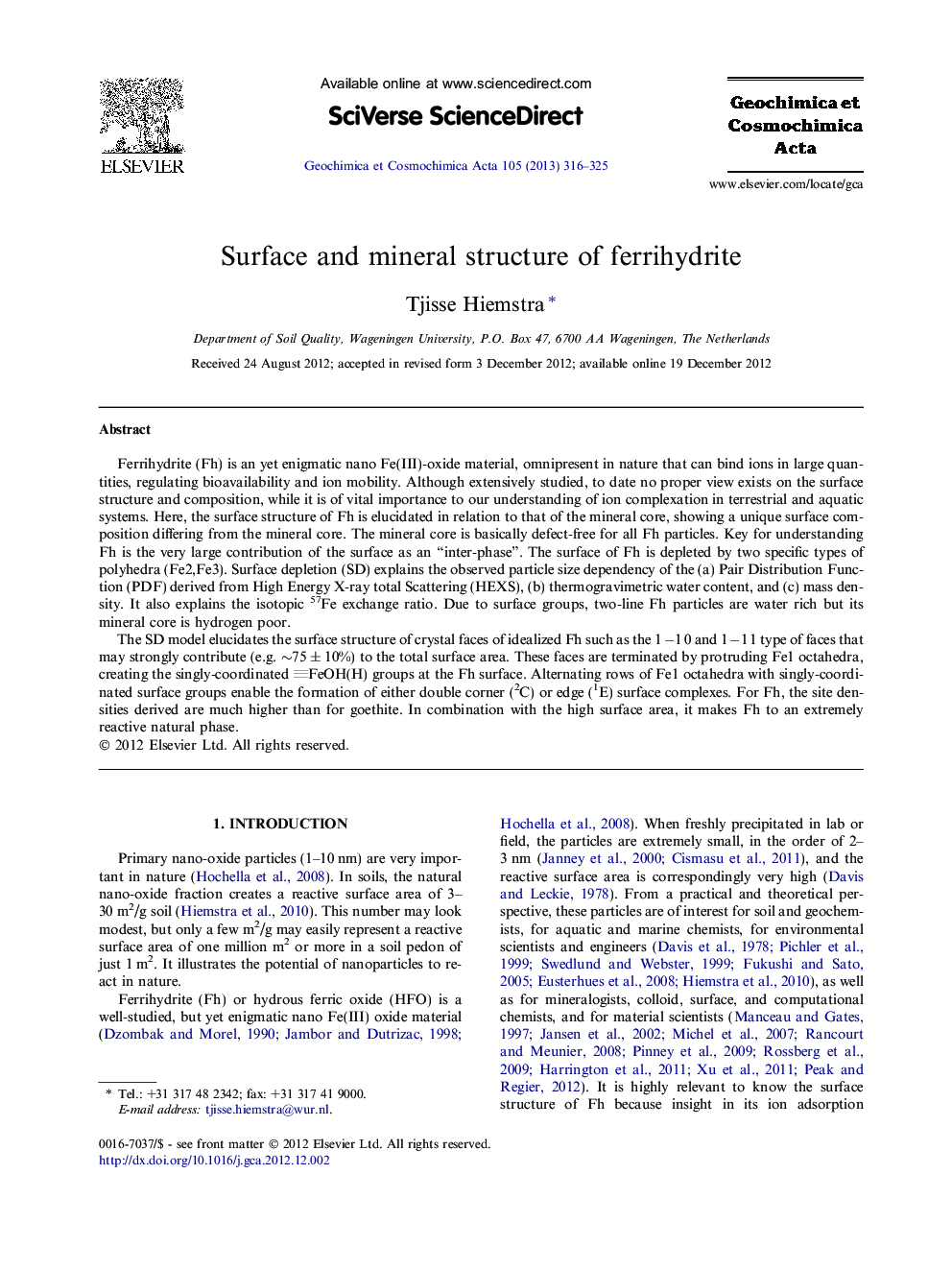| Article ID | Journal | Published Year | Pages | File Type |
|---|---|---|---|---|
| 4702555 | Geochimica et Cosmochimica Acta | 2013 | 10 Pages |
Ferrihydrite (Fh) is an yet enigmatic nano Fe(III)-oxide material, omnipresent in nature that can bind ions in large quantities, regulating bioavailability and ion mobility. Although extensively studied, to date no proper view exists on the surface structure and composition, while it is of vital importance to our understanding of ion complexation in terrestrial and aquatic systems. Here, the surface structure of Fh is elucidated in relation to that of the mineral core, showing a unique surface composition differing from the mineral core. The mineral core is basically defect-free for all Fh particles. Key for understanding Fh is the very large contribution of the surface as an “inter-phase”. The surface of Fh is depleted by two specific types of polyhedra (Fe2,Fe3). Surface depletion (SD) explains the observed particle size dependency of the (a) Pair Distribution Function (PDF) derived from High Energy X-ray total Scattering (HEXS), (b) thermogravimetric water content, and (c) mass density. It also explains the isotopic 57Fe exchange ratio. Due to surface groups, two-line Fh particles are water rich but its mineral core is hydrogen poor.The SD model elucidates the surface structure of crystal faces of idealized Fh such as the 1 −1 0 and 1 −1 1 type of faces that may strongly contribute (e.g. ∼75 ± 10%) to the total surface area. These faces are terminated by protruding Fe1 octahedra, creating the singly-coordinated FeOH(H) groups at the Fh surface. Alternating rows of Fe1 octahedra with singly-coordinated surface groups enable the formation of either double corner (2C) or edge (1E) surface complexes. For Fh, the site densities derived are much higher than for goethite. In combination with the high surface area, it makes Fh to an extremely reactive natural phase.
